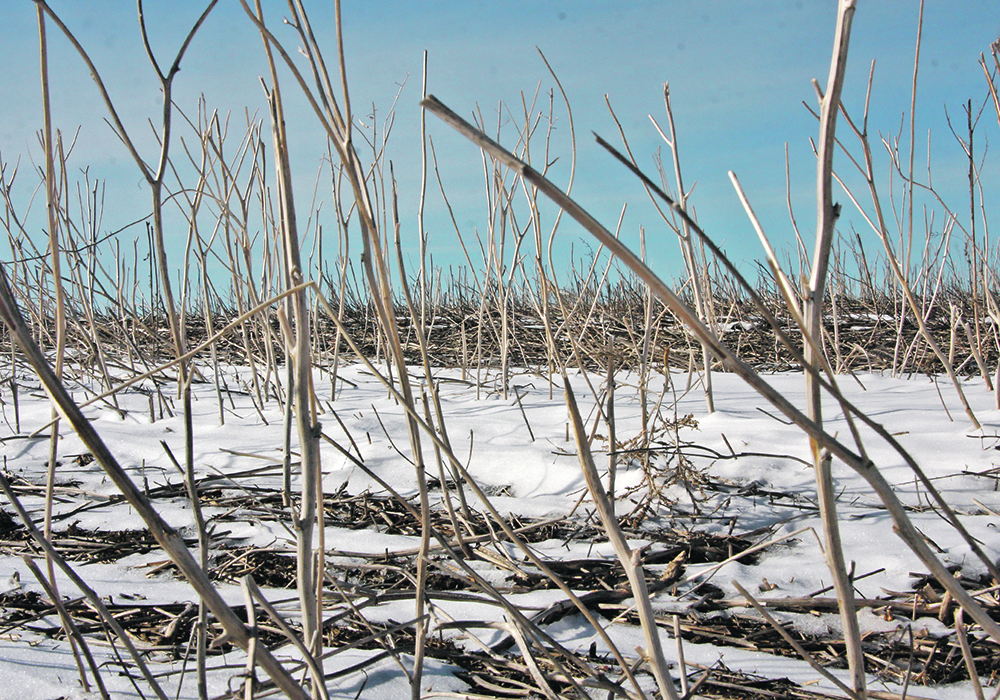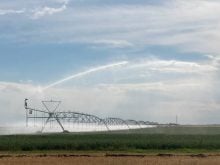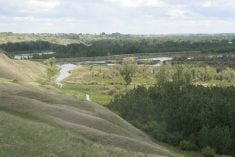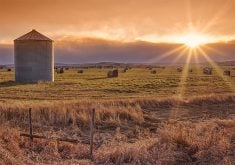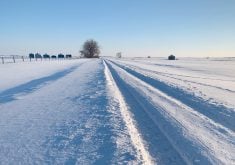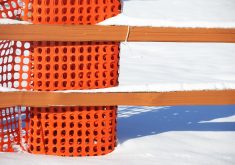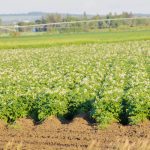Crops use a lot of water from outside the growing season, which farmers can manage through agricultural practices
BALCARRES, Sask. — Farmers know that leaving taller stubble can increase water available to crops the following year.
But they may not know how much they benefit from it.
Hydrologist Phillip Harder from the Global Institute for Water Security said snow catch in stubble can make 10 to 30 percent more water available.
He told the Indian Head Agricultural Research Foundation soil and crop management seminar that, since the Prairies are dominated by winter processes, crops use a lot of water from outside the growing season. And that is one aspect of the hydrological cycle farmers can manage through agricultural practices.
Read Also
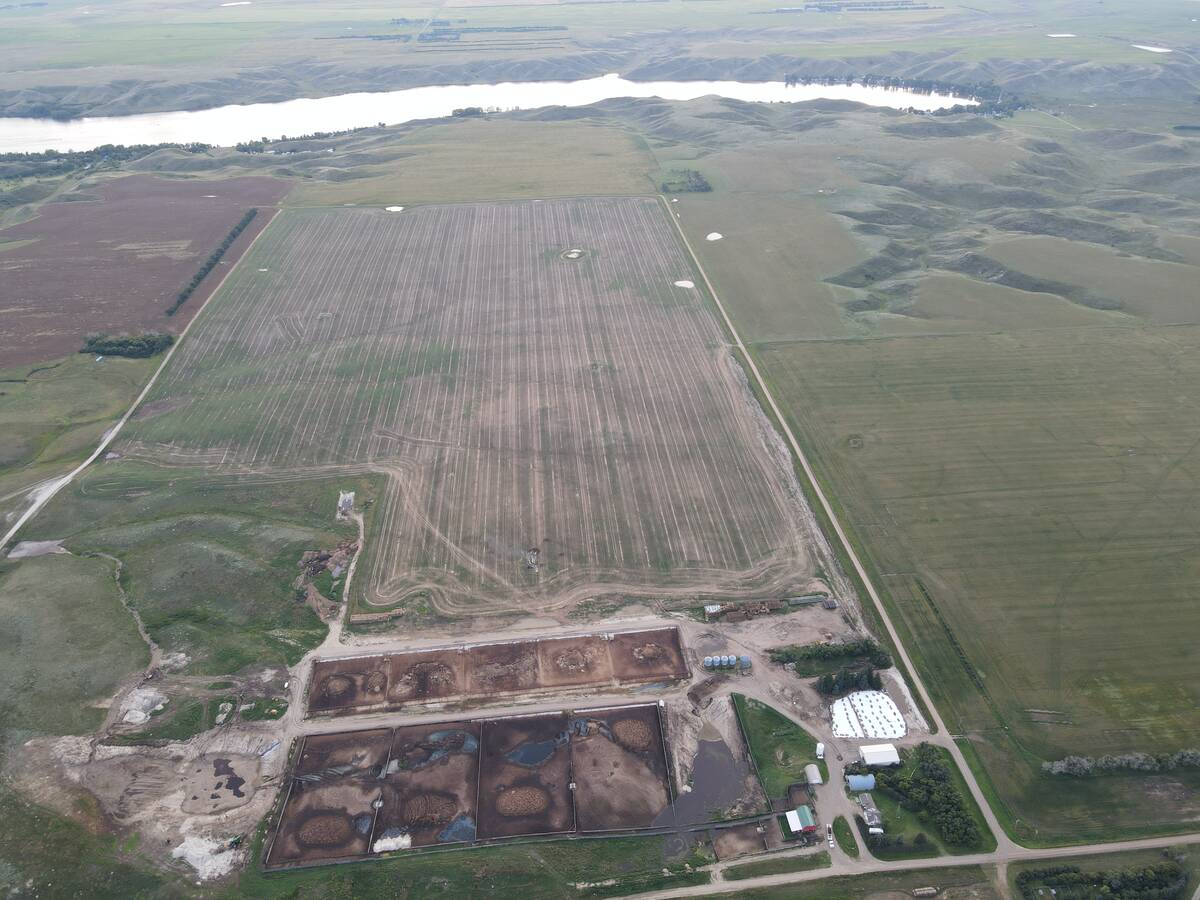
Saskatchewan RM declines feedlot application, cites bylaws
Already facing some community pushback, a proposed 2,000-head cattle feedlot south of Swift Current, Sask., has been rejected for a municipal permit, partly over zoning concerns about the minimum distance from a residence.
“On the Prairies, things tend to be rather water dominated one way or the other,” he said in an interview. “So when you are sitting down and trying to figure out what you’re going to do, what you’re thinking about crop stubble management or crop residue management, think about some of the hydrological processes that you’re going to be impacting.
“In terms of stubble height, it is the one lever that we have to change the amount of water that’s coming into our field.”
Harder agreed that farmers inherently know this but they might not understand how beneficial that moisture is. Many will say that rain is more effective than snow, but when a dry cycle occurs, that snow component becomes more important.
In fact, Harder’s data show that in the last couple of dry years, 50 percent of crop water use came from snow and non-growing season rainfall. The vast majority of this was from snowmelt. Although production wasn’t great, this generated at least some yield.
That percentage is high, he said, and data is limited.
“But it ranges from five to 10 percent in a low snow high rainfall year to 50 percent in a drought situation where we had decent snowfall the year before,” he said.
Harder said water storage is a function of what goes into the soil minus what goes out. If nothing comes in and the storage from the year before is used up, that creates the intense drought situation. Preceding years are also factors.
Data from sites at Kenaston, Sask., show that while 2015 and 2016 were both wet, the winter of 2017 was dry and little rain fell during the following growing season.
“We still have a lot of crop water use because there was high residual moisture content,” he said. “So you can get through those low snow and rainfall years only if you have stuff stored in your soil and that’s what we really did see a lot in that year.”
There was also good soil moisture coming off a wet cycle.
“You need to look at the whole year, you need to look at the winter process, you need to look at a couple of years previously because that’s what’s going to be telling you your risk,” he said.
Crops such as peas and lentils with little stubble provide residue that partly control water in, but also restrict water out. Residue layers reduce soil evaporation and retain the moisture that has infiltrated.
Harder said the accumulation of residue over time, because other crops are also grown on those fields, is what helps. One year’s worth of residue won’t change much.
Fallow fields don’t lose water through transpiration from plant roots, but moisture will still evaporate. Harder said precipitation-use efficiency shows that very little of the rain and snow that fell on that bare soil ends up as stored water because of continual evaporation.
Still, hydrological processes are complicated by the type of crop grown, the weather and location. Managing for them is tricky, Harder said.
Farmers in the southwest, for example, should do everything they can to increase moisture input and retention.
In areas of Manitoba and northeastern Saskatchewan, where it’s typically wetter but drought can occur, stubble management is less effective because it’s not as windy and open, Harder said.
“In those places, things like residue retention is probably a better strategy on its own,” he said. “It increases the risk of, if things get really wet, slowing down a field drying out versus if it was bare soil, but… it moves better in a healthy soil.
“This all being said, this is only from my perspective as a hydrologist, so from a water perspective alone. There are other trade-offs.”
This winter, a lot of early snow on dry soil and before much freezing created high infiltration potential over most of the region, said Harder.
Since then, however, rain and melting in some places has reduced that potential.
“Melt water has gotten into the soil and most likely refrozen at the surface,” he said. “In those areas there has been a net increase in soil moisture since the start of the year, but if we do get more snow, the prospects of that infiltration are less than an area like Saskatoon, where we still have a decent snowpack.”
Harder recently checked snow levels in the Elrose area, which has been hard hit by drought. Some fields are showing ice crust just beneath the surface, which will prevent infiltration. Other fields look better.
He said in stripper stubble there were about 75 millimetres of snow water equivalent versus about 50 mm in shorter cereal stubble.
“That amount of moisture, it’s on the order of how much water they had all last summer,” he said.


